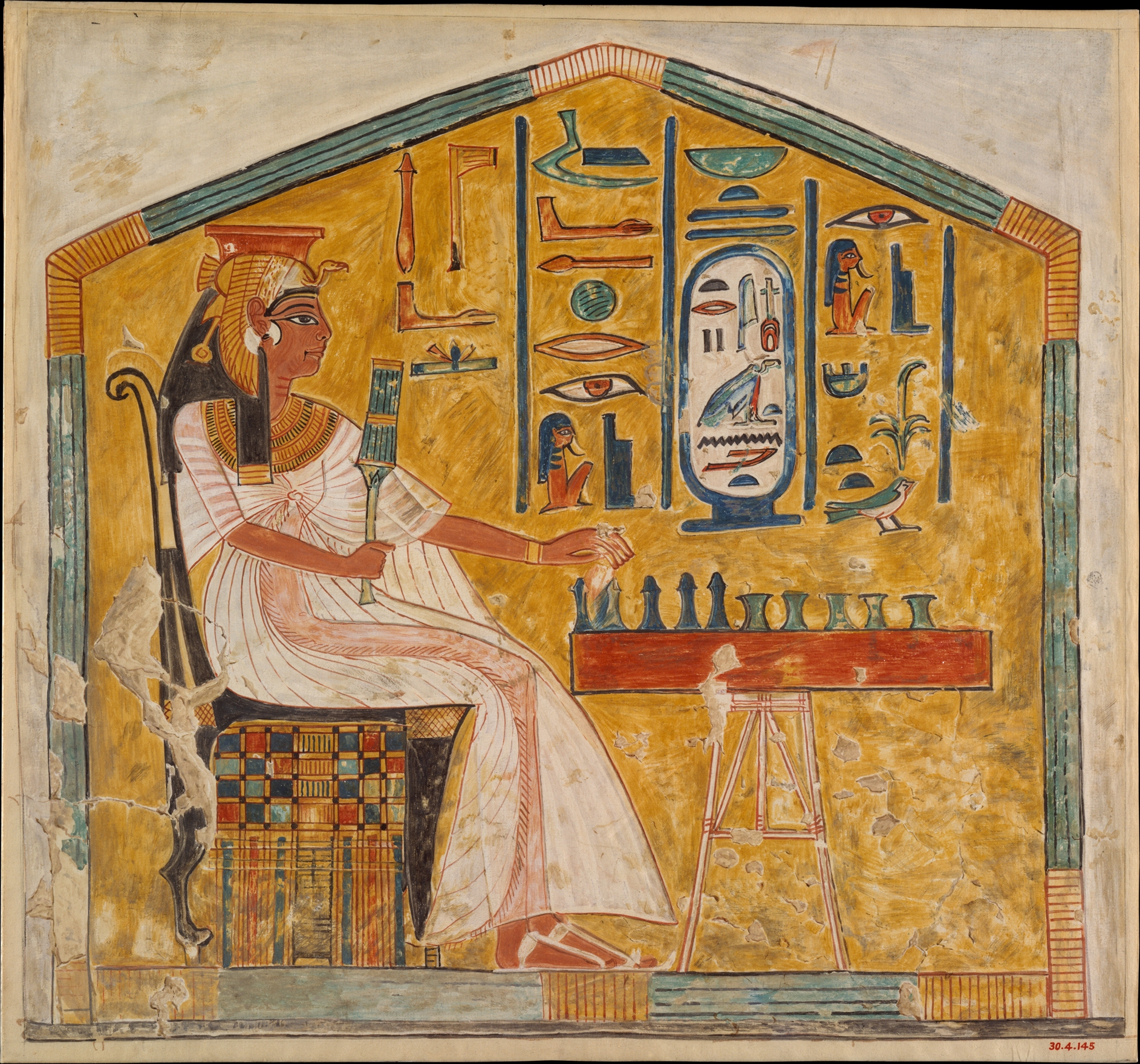
A hundred years ago, in 1922, our library was founded. On November 4 of that year, the tomb of the pharaoh Tutankhamen (commonly called King Tut) was opened for the first time in over 3,000 years. Among the many treasures discovered inside were four beautiful games of Senet, a popular game played by the ancient Egyptians.
Celebrate the library’s birthday and Tutankhamen’s rediscovery by making and playing one of his favorite games!
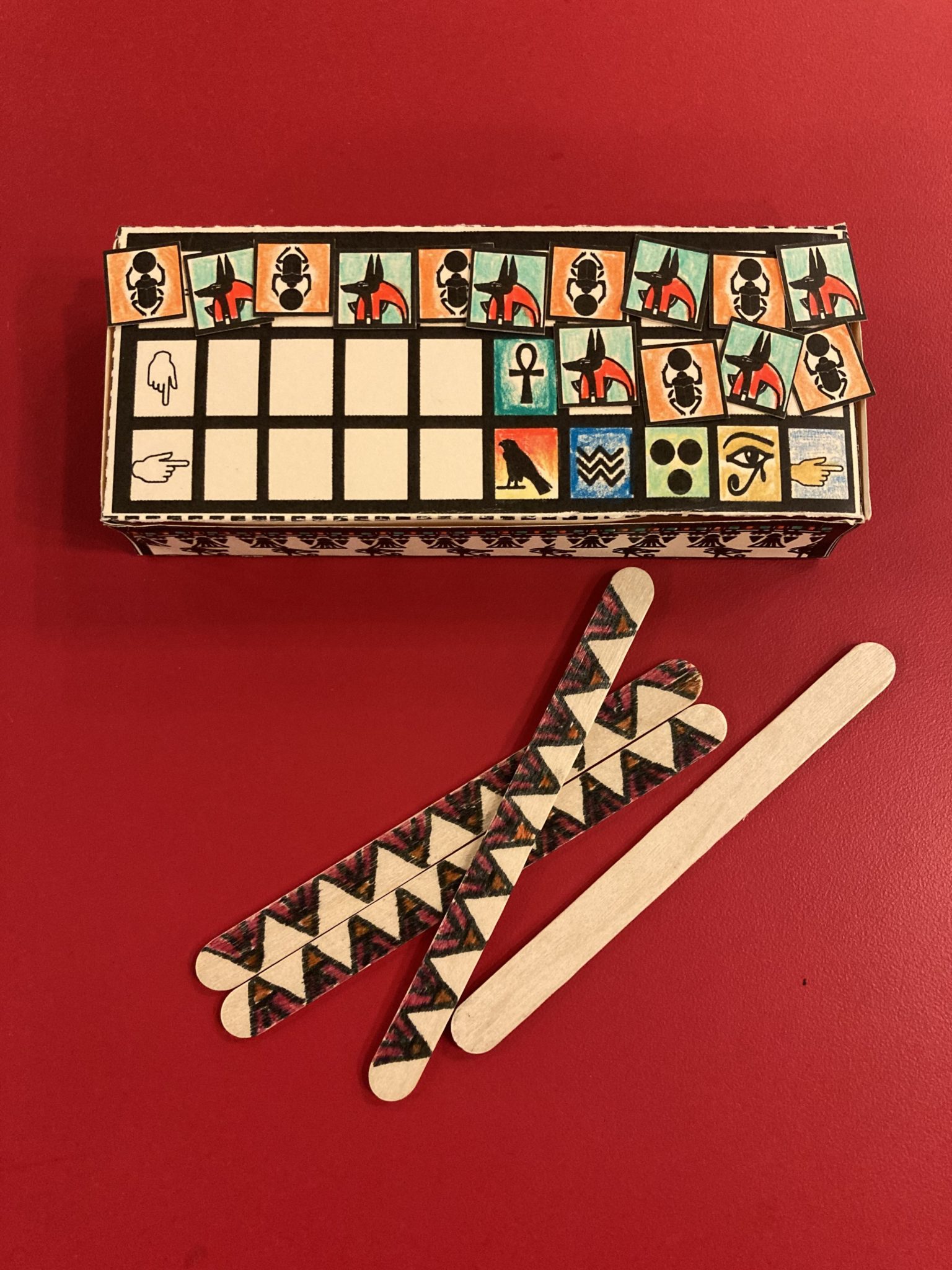
To make the board and throwing sticks, you will need:
- Scissors
- Glue or tape
- Colored pencils or fine-tipped markers
- 4 craft sticks
- Senet box template
- Rules for Senet
Instructions:
Print the Senet box on cardstock. (You can use regular paper, but it will be flimsy.)
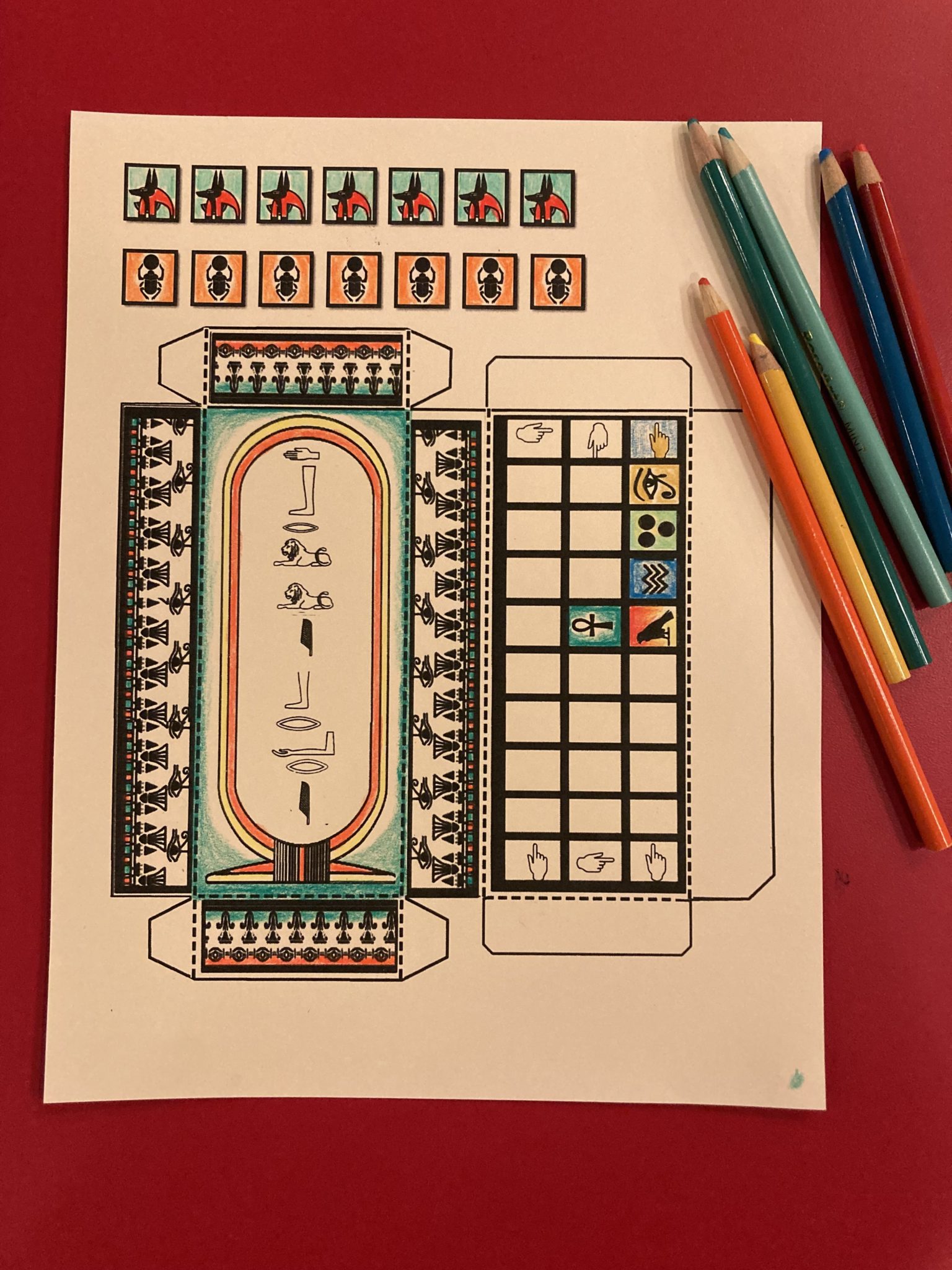
Color the box using colored pencils or markers.
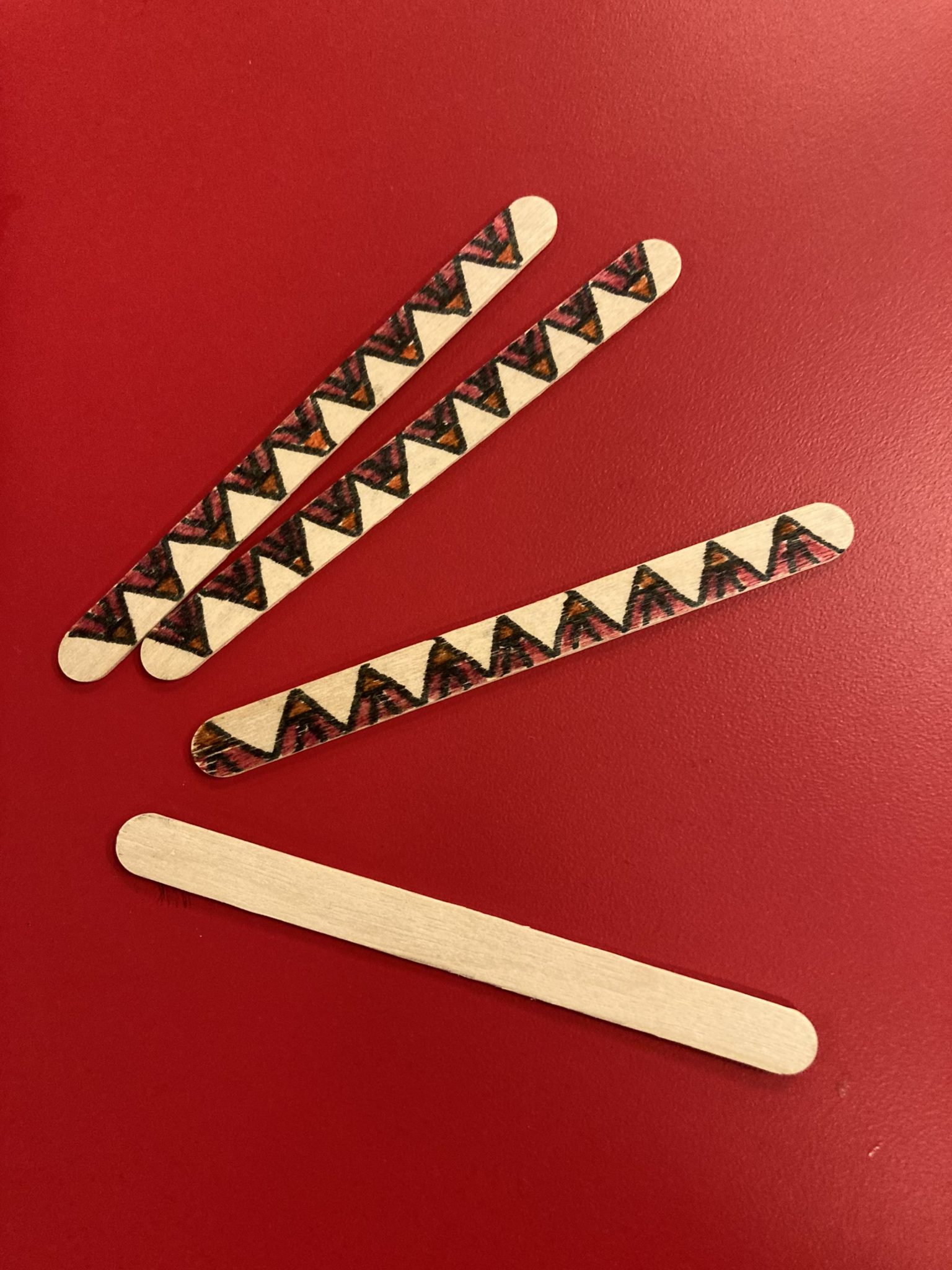 Using markers, decorate one side of each of the throw (craft) sticks.
Using markers, decorate one side of each of the throw (craft) sticks.
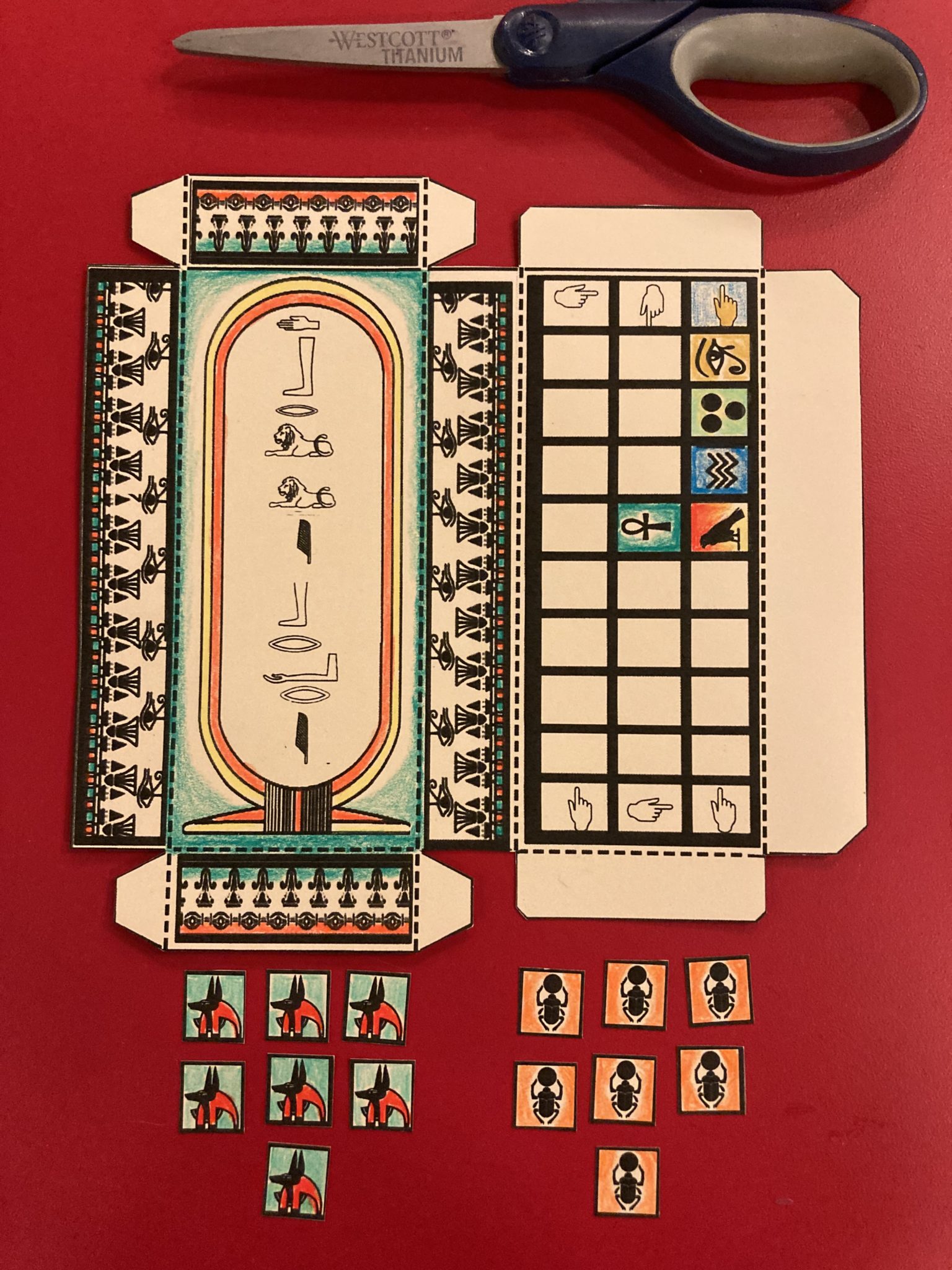
Cut out the box and the game pieces. You can also use flattened glass beads (a.k.a. dragon tears) or small stones as game pieces.
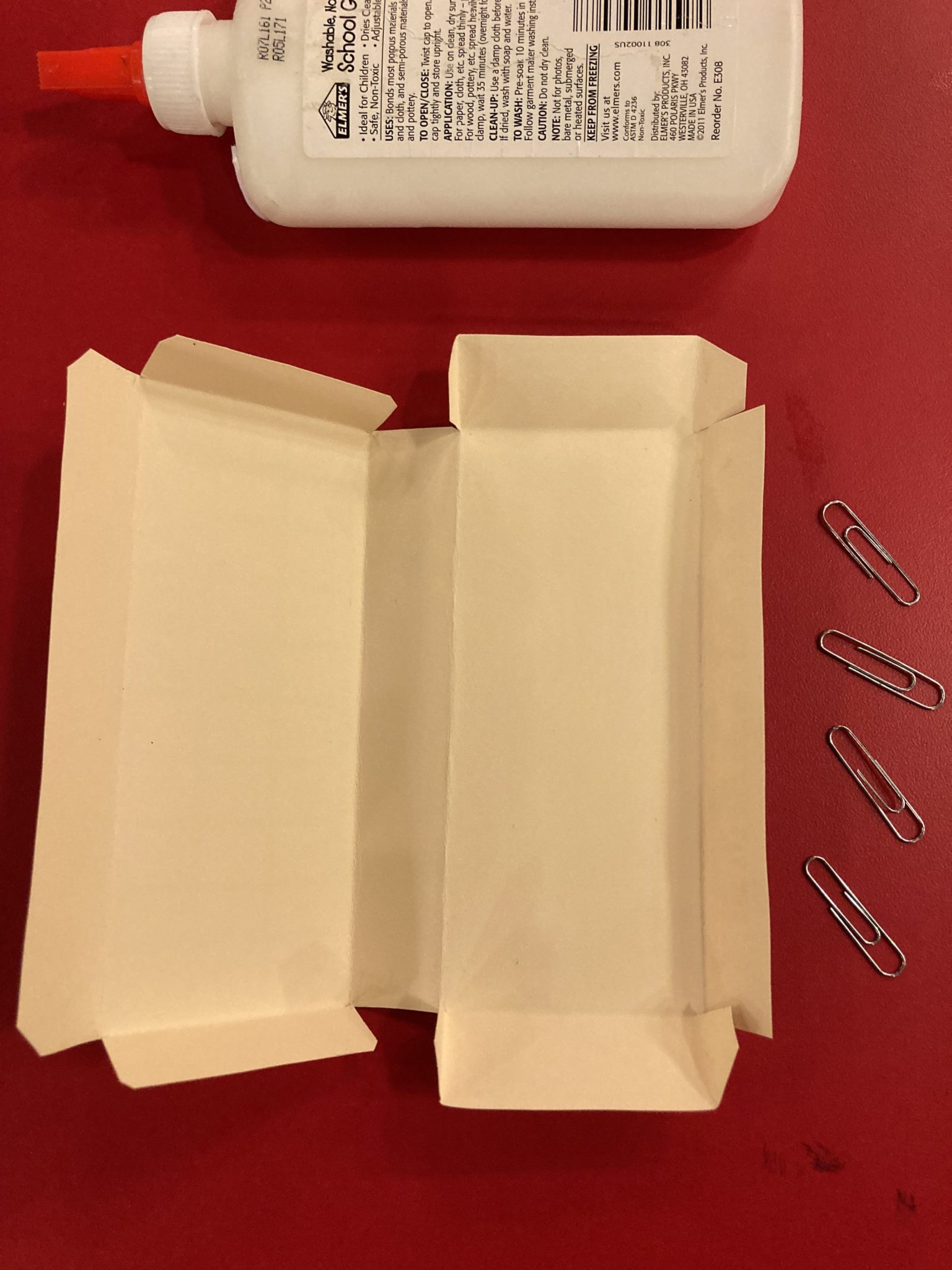
Fold the flaps and sides along the dashed lines. See the example above. It is sometimes helpful to press the folds both ways before gluing them together.
Glue or tape the small flaps to the inside, bottom of the box. If you are using glue, paperclips can help hold the flaps together in front until they dry. The back flaps are a little more tricky, and you may have to press them together for a few minutes to make sure they are attached.

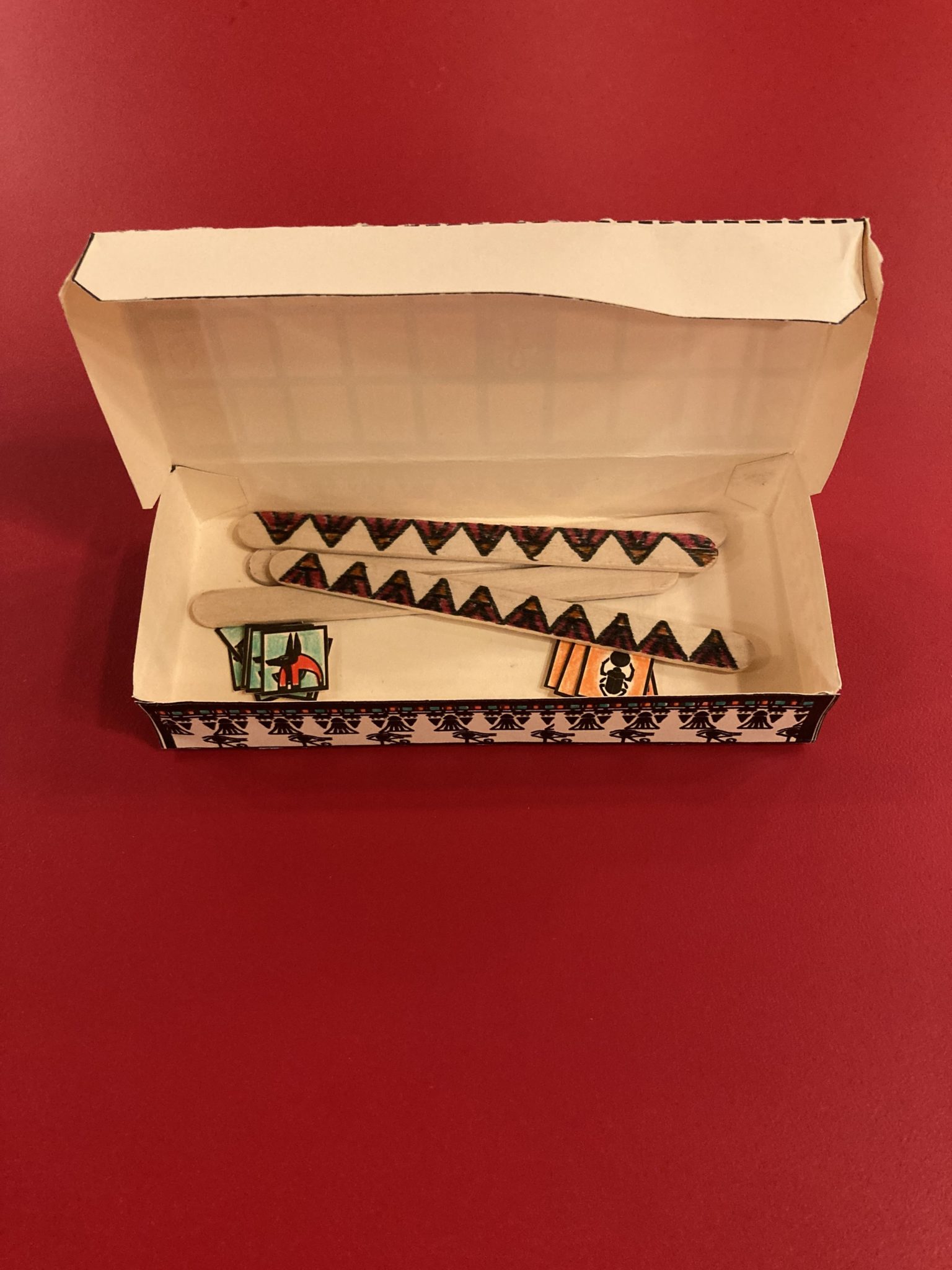
The picture above shows the finished box. The throwing sticks and game pieces can be stored inside.
Now you’re ready to play! Here are the rules. Enjoy!
If you love all things Egyptian, check out this graphic novel version of the Kane Chronicles called “The Red Pyramid,” written and adapted by Rick Riordan and illustrated by Orpheus Collar. While this book takes place in the present day, it includes many references to Egyptian mythology and archaeology.
You don’t need to leave home to visit the Egyptian galleries at the British Museum in London or the Egyptian Museum in Cairo. These links take you to the museums’ websites that offer virtual tours of their Egyptian galleries:



